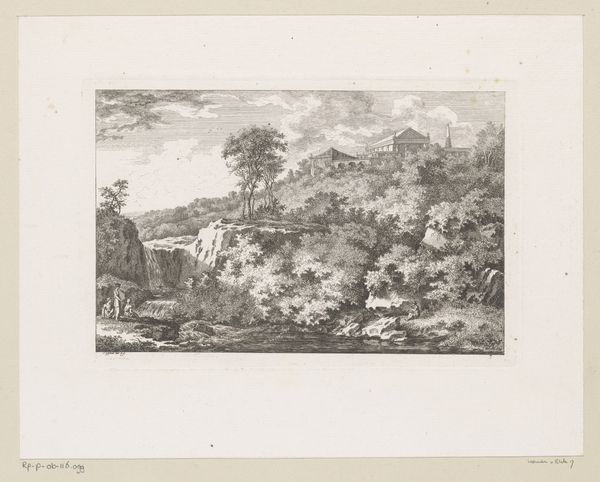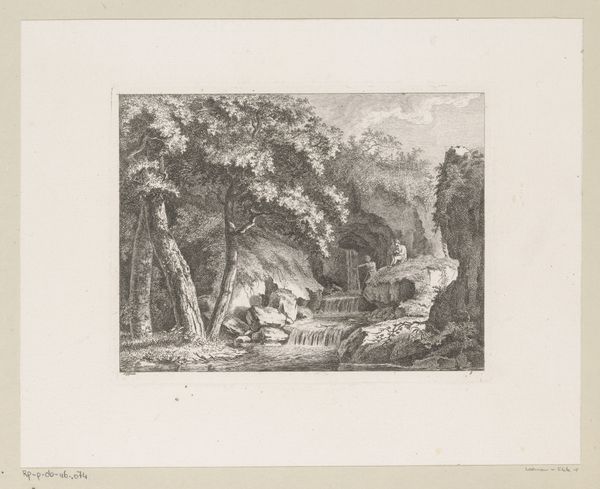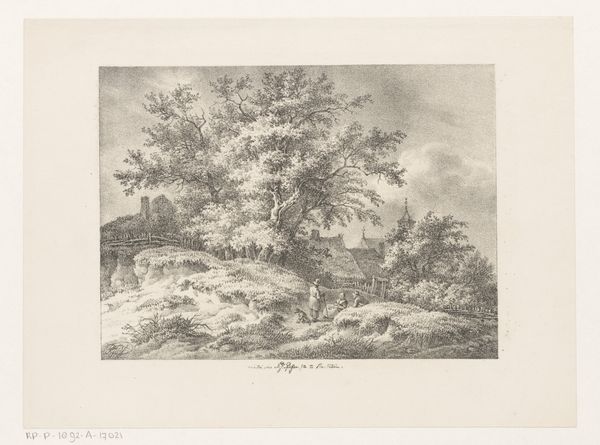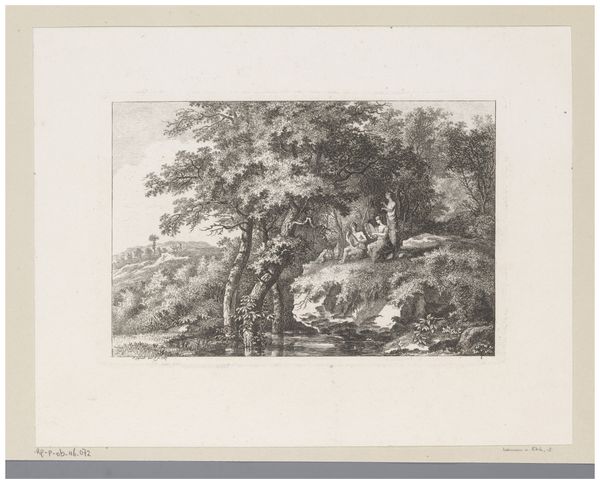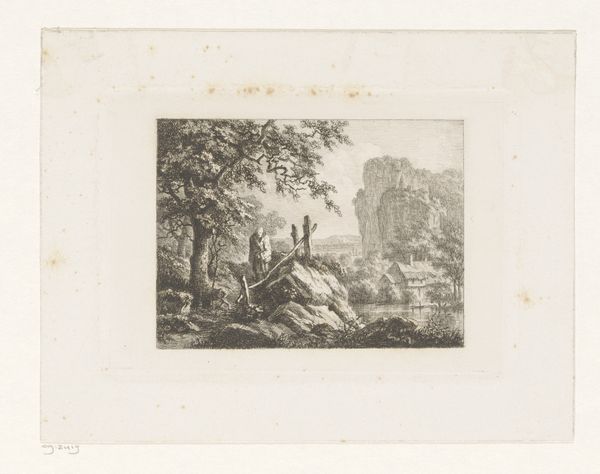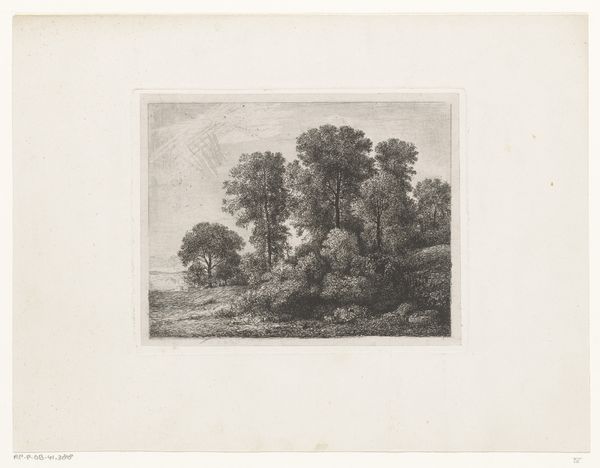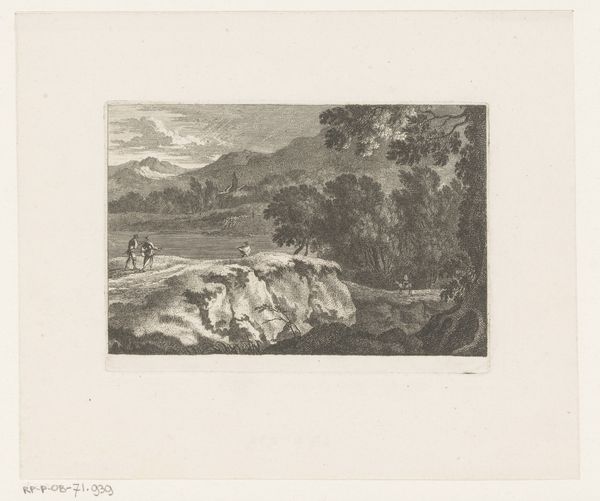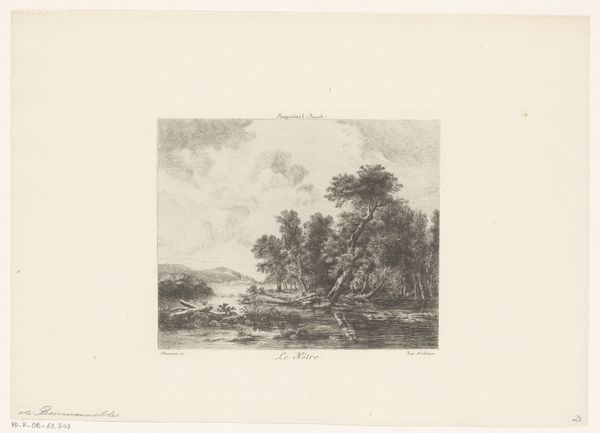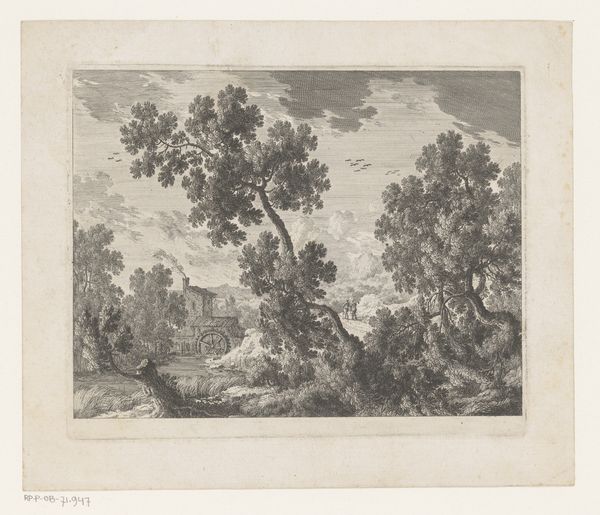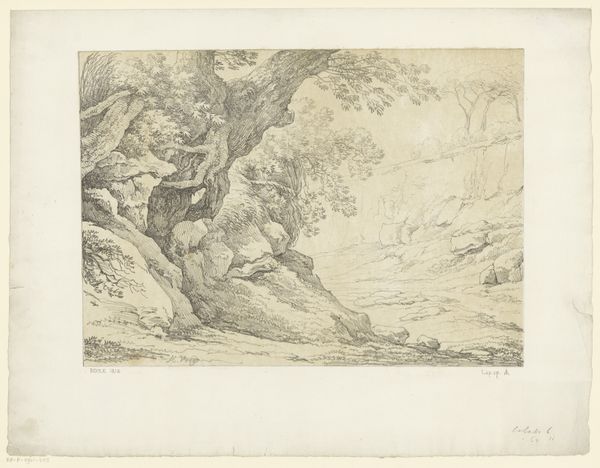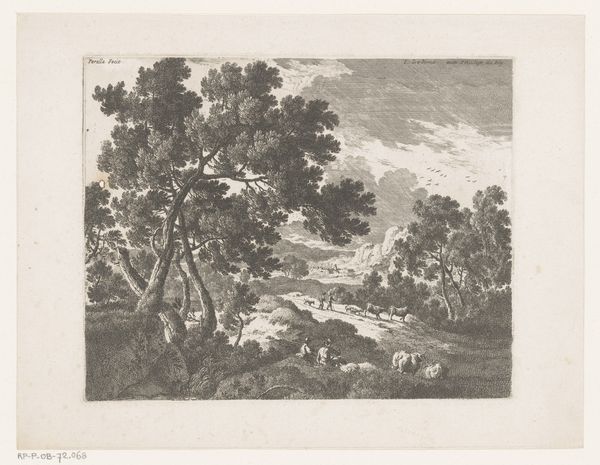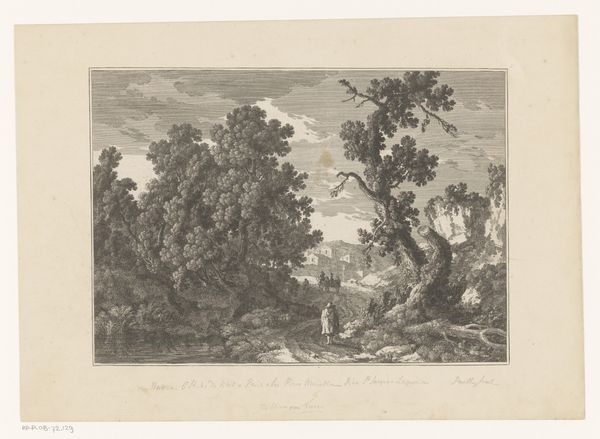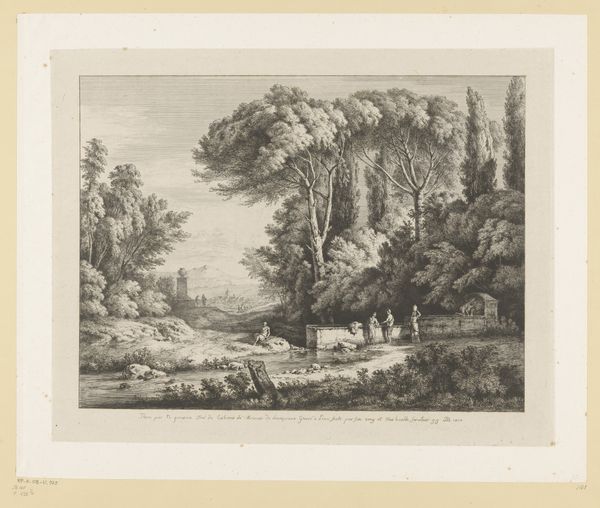
Dimensions: height 173 mm, width 212 mm
Copyright: Rijks Museum: Open Domain
Editor: This is "Rocky Landscape with Shepherds and Shepherdesses," an etching by Salomon Gessner, from around 1767 or 1768, currently held at the Rijksmuseum. It has this wonderful, soft texture from the etching, and the composition feels very balanced between the figures and landscape. What do you see in this piece, looking at it formally? Curator: Focusing on its inherent structure, observe how Gessner employs line—almost exclusively—to define form and create depth. The density and variation of these etched lines model light and shadow, giving shape to the rocks, trees, and figures. The composition, as you pointed out, has balance. Do you perceive a specific structural principle guiding the distribution of elements? Editor: Well, the rock on the left where the figures are sitting seems to mirror the large hill or mountain behind and to the right. They sort of echo each other? Curator: Precisely. This mirroring contributes to the piece’s equilibrium. Furthermore, consider how Gessner directs our gaze. The lines converge and diverge, leading our eye through a designed path within the pictorial space. What effect do you think this is intended to produce? Editor: It makes me want to look around. My eye travels from the people on the rock to the waterfall to the person walking through the trees and back again. It is a dynamic composition despite being black and white. Curator: Indeed. And how does the artist employ value to create the sensation of depth, to define what is further away versus closer? Editor: I guess the further away the forms get, the less distinct the line becomes? There are lighter areas farther in the background. Curator: The intentional manipulation of tonal range using the line becomes essential, articulating spatial relationships and imbuing the image with a sense of atmospheric perspective. Looking at it in this manner lets us engage with Gessner's artistic decisions beyond just subject matter. Editor: That's interesting. I’d been caught up in the overall "scene" and didn't initially consider the etching techniques and their contribution to the overall feel of the piece. Thanks!
Comments
No comments
Be the first to comment and join the conversation on the ultimate creative platform.
